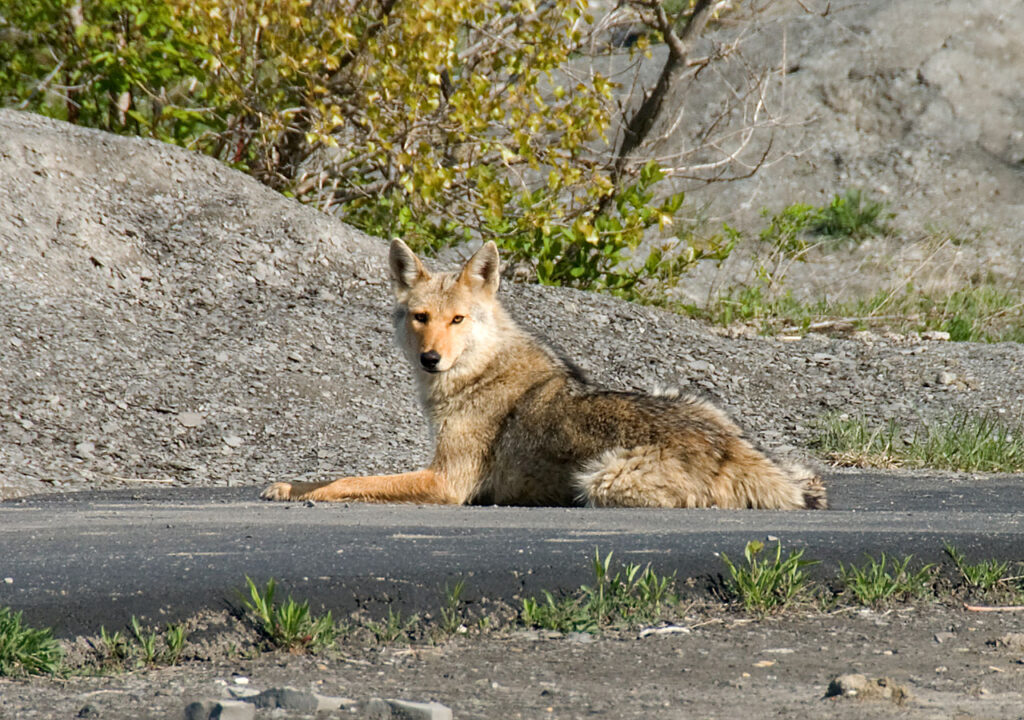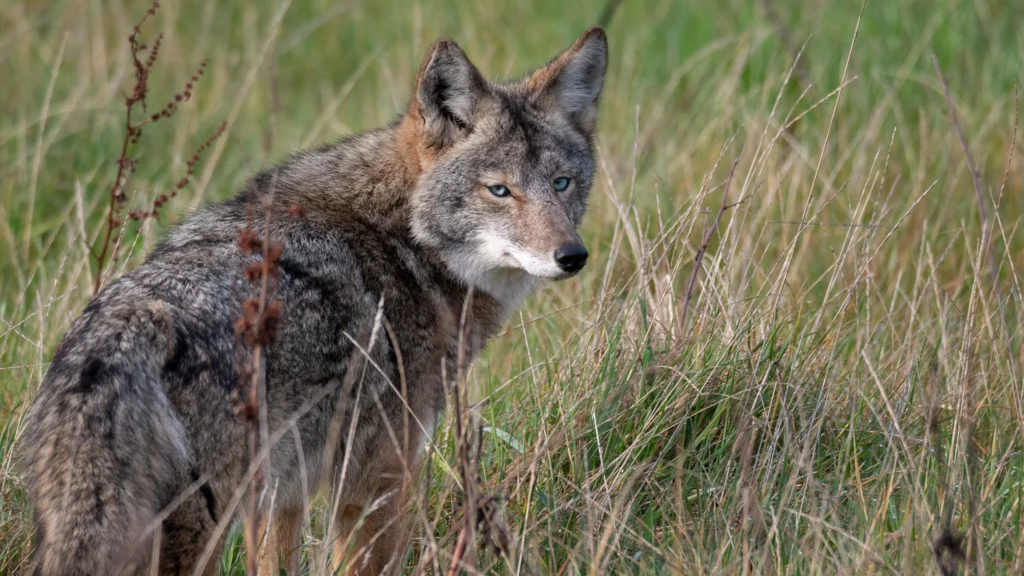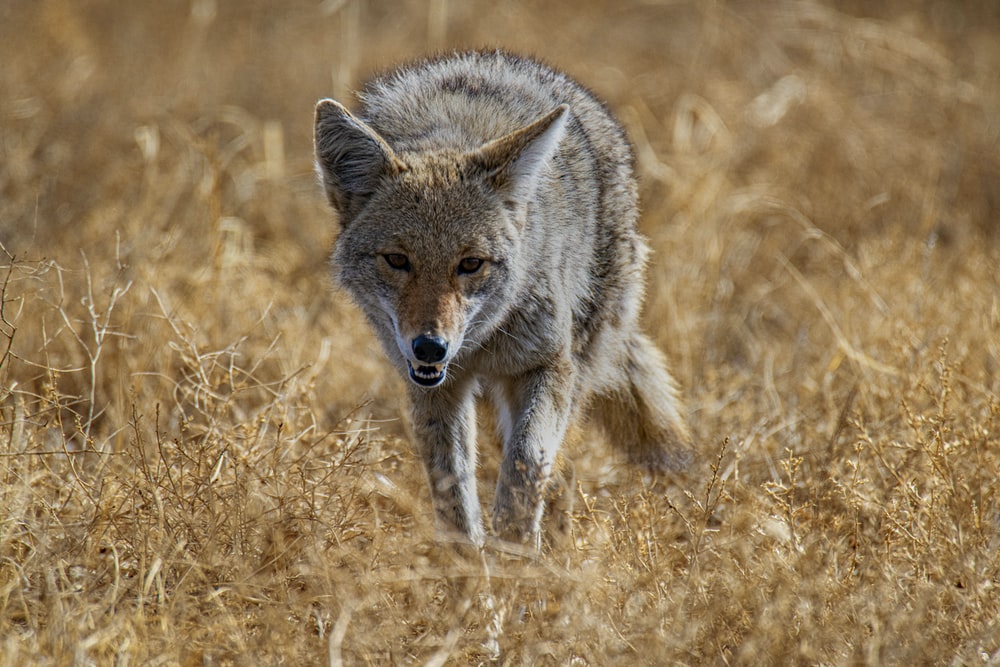
Coyote: (Canis latrans)
Coyotes are in the same family as dogs, wolves and foxes. Coyotes have the appearance of a medium sized dog, weighing between 20 and 50 pounds; 32 to 37 inches tall, 4 feet long; its tail length is about 16 inches.
Coyotes color patterns consist of a grayish-brown pelt sometimes black. Their chests have a patch of white fur. Their ears are pointed, its muzzle is long and narrow and its tail is bushy with a black tip. The male coyotes are usually larger than the females. The coyote at one time was strictly a western species, but is now throughout the eastern United States. They are numerous coyotes in northern Florida, and their numbers are increasing throughout the state of Florida. It is likely coyotes will eventually occupy the entire state.
Coyotes are extremely adaptable and inhibit areas such as woods, brush, fields, farmland, and residential areas, basically most of Florida.
Coyotes will eat just about anything. Their primary diet consists of small mammals such as birds, sheep, goats, calves, feral hogs, poultry, snakes, frogs and even berries. The most important species they consume are rodents, rabbits, wild fruits, insects, and carrion (dead animals).
Coyotes are active day or night, mostly at dusk and dawn. They usually hunt alone, sometimes as a pair, but rarely as a pack. They can run up to 40 miles per hour. Coyotes are also excellent swimmers. They also have keen vision and a strong sense of smell. Coyotes communicate with each other using a distinctive call, usually at night this call develops into a canine chorus. Coyotes will dig their own dens if needed, however they usually expand burrows made by other animals, such as gopher tortoises or an armadillo. They also use hollow logs or brush piles as dens. Their pack consists of the breeding pair and their young, as coyotes are not as social as wolves are. Coyotes are normally timid and tend to shy away from humans, although rare, coyotes have been known to attack humans. These attacks result in minor bites and scratches to people attempting to stop an attack upon a family pet. It is never recommended leaving unattended children or small pets in areas known or suspected to be inhabited by coyotes. Coyotes can mate for the first time around the age of 10 months old; only having 1 breeding cycle per year which occurs in late winter. They can also mate with domestic dogs which is rare. When coyotes reach the age of 2 they usually select a mating partner for life. The coyotes gestation period is 63 days long and usually delivering an average of 6 pups. Both parents and on occasion the offspring from prior litters that are not breeding, will help raise the young. When the pups are approximately 3 weeks old they begin to emerge from the den. These dens are only used when the pups are small and then abandoned when the young are about 8 to 10 weeks old, but the parents continue to raise the pups until they are about 9 months old.
Coyotes can be infected with distemper, hepatitis, parvo virus, mange and rabies. They also carry several living parasites including mites, ticks, fleas, worms, flukes and heart-worms.
Coyotes can cause significant losses in certain areas, by preying on domestic sheep, goats, calves, hogs, poultry, cats, dogs and crops. They also cause damage to our property, although this damage is rare and has been restricted to small areas.


